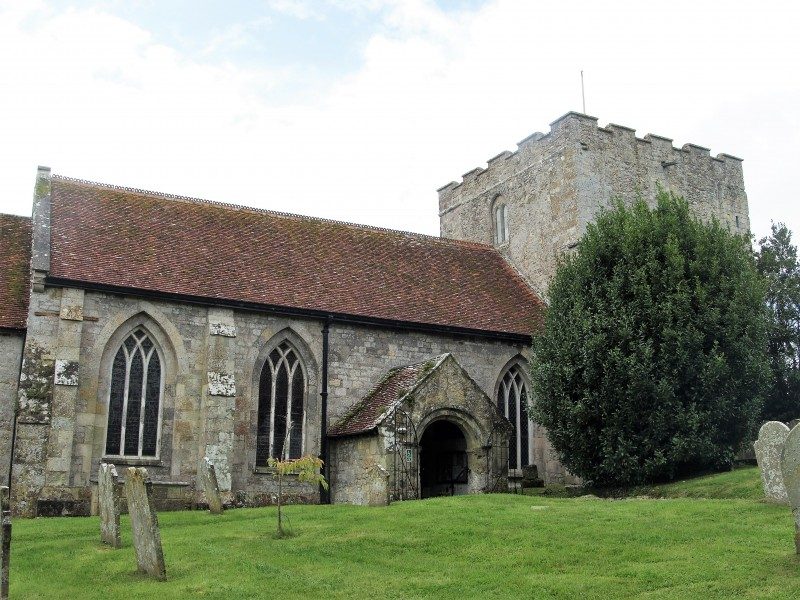
Shalfleet Church
The Church of St Michael the Archangel
(A3054) Main Road, Shalfleet, Isle of Wight, PO30 4NF
» View on Map
The first photograph in the gallery below is of the north entrance doorway. The door itself is dated 1754, but the arched opening is 12th century Norman and features a tympanum with unusual carving of a bearded man with outstretched arms above two animals. This perhaps depicts Adam naming the animals in the Garden of Eden, although alternative interpretations have been suggested.
The second photograph is of the south wall of the south aisle with two 13th century 3-light windows which have very unusual, possibly unique, oval tracery.
Next shown is another view of the south aisle, this one looking towards the west wall. The columns and arches of the south arcade are finely carved from Purbeck stone.
The fourth and fifth photographs are of the chancel arch and screen looking in opposite directions. The screen was erected in the early 20th century in the position where a rood screen would have been before the Reformation.
The first photographs in the second gallery are of three of the stained glass windows at St Michael’s. The first one is the War Memorial window located at the eastern end of the north wall of the nave. It was installed in 1920 and depicts St Nicholas, patron saint of sailors, and St George, patron saint of soldiers, the two flanking Christ in the centre light. Next is the ‘Wyndham Cottle’ window in the east wall of the chancel. The stained glass depicts St Luke, Christ healing the sick, and Christ as the Good Shepherd, being references to Dr Cottle’s profession as a physician. The third window, which is in the south wall of the chancel, shows the Nativity. It was installed in 1888 in memory of the Pennethorne family.
The last two photographs are of the pulpit and the font. The oak pulpit dates from the Carolean era (Charles I) in the first part of the 17th century, and the font has a circular bowl which is from a little earlier, towards the end of the 16th century.











